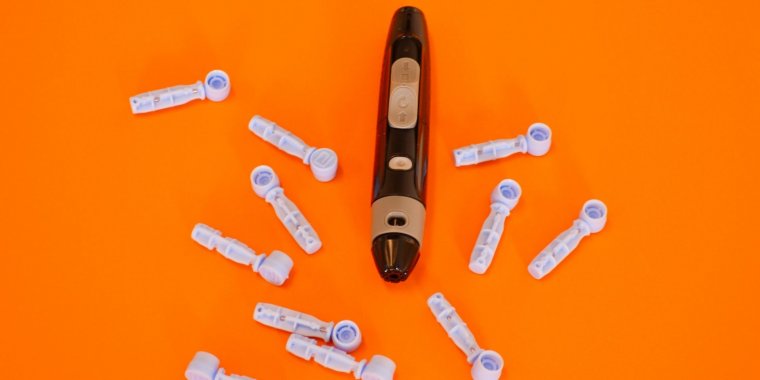| Health / Health News |
Serious complications from youth-onset type 2 diabetes arise by young adulthood
People with type 2 diabetes diagnosed during youth have a high risk of developing complications at early ages and have a greater chance of multiple complications within 15 years after diagnosis.

Device with lancets to obtain blood sample for glucose measurement. Photo: Diabetesmagazijn.nl/Unsplash
Within 15 years of a type 2 diabetes diagnosis, 60% of participants had at least one diabetes-related complication, and nearly a third of participants had two or more complications, according to results of the Treatment Options for Type 2 Diabetes in Adolescents and Youth (TODAY) follow-up study, called TODAY2.
“The original TODAY study showed that youth-onset type 2 diabetes is distinct from adult-onset diabetes – it is both more aggressive and more difficult to control,” said Dr. Barbara Linder, National Institute of Diabetes and Digestive and Kidney Diseases (NIDDK) project scientist for TODAY.
“By following this unique disease course, TODAY2 shows the devastating complications that can develop in what should be the prime of these young people’s lives.”
TODAY2 involved 500 original participants from the TODAY study, which began in 2004. TODAY was the first major comparative effectiveness trial for the treatment of type 2 diabetes in youth.
The study compared three treatments for managing blood glucose: metformin alone, metformin plus rosiglitazone, and metformin plus an intensive lifestyle intervention.
At the time of enrollment, participants were between the ages of 10-17, had been diagnosed with type 2 diabetes for fewer than two years, and were overweight or had obesity. The average age of participants after the TODAY2 follow-up was 26 years.
Participants in TODAY2 were monitored annually for signs of diabetes complications, including heart disease, kidney disease, diabetic foot complications, and to report other health events. Diabetic eye disease was assessed once during the study, at the seven-year study visit.
Overall, researchers saw a steady decline in blood glucose control over 15 years. In addition, 67% of participants had high blood pressure, nearly 52% had dyslipidemia or high fat levels in the blood, nearly 55% had kidney disease, 32% had evidence of nerve disease, and 51% had eye disease.
Rates did not differ based on the original TODAY study treatment group assignment.
In addition, certain participants had a higher likelihood to develop multiple complications over time, with 28% developing two or more over the follow-up period.
Participants who belonged to a minority racial or ethnic group, or who had high blood glucose, high blood pressure, and dyslipidemia were at higher risk for developing a complication.
“Compared to what we see in adults with type 2 diabetes, the participants in TODAY2 developed complications much earlier in their disease course and at a much faster pace over time,” said TODAY2 study chair Dr. Philip Zeitler, professor of pediatrics-endocrinology at the University of Colorado School of Medicine.
“This study shows the importance of treating youth-onset type 2 diabetes intensively from the beginning and using all available approaches to control blood glucose and prevent, delay, or aggressively treat developing complications.”
The TODAY and TODAY2 studies were conducted at 15 centers in the U.S. and The George Washington University, Washington, D.C., served as the data coordinating center. (National Institutes of Health)
YOU MAY ALSO LIKE





